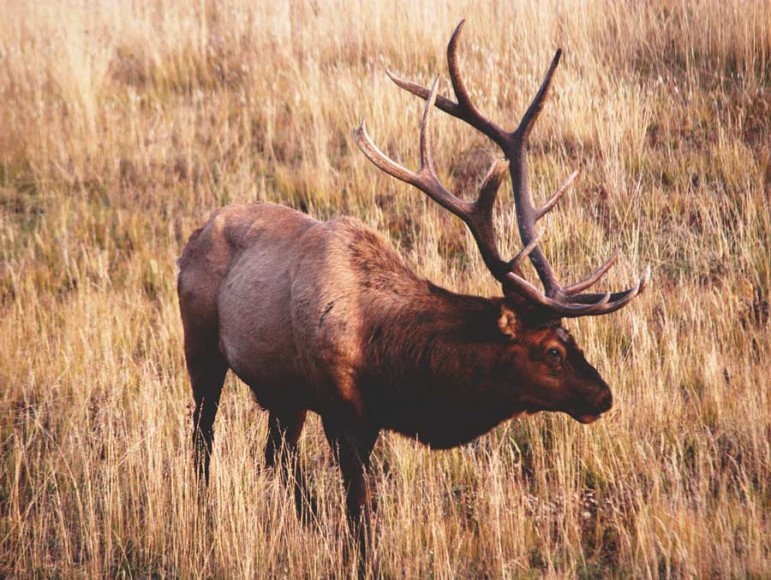
Yellowstone National Park officials are reminding visitors to keep their distance from elk and other wildlife as fall approaches.
Following a summer that brought at lest five visitor injuries resulting from getting too close to bison, as well as the death of a hiker from an encounter with a mother grizzly and cubs, officials in Yellowstone National Park are stressing safety around wildlife as the fall season approaches.
As summer winds down and cooler temperatures start to spread across the high country of Yellowstone, some wildlife in the park begin migrating, while others stock up on extra food to pack on the pounds before winter. Elk begin their fall rut, and will soon be vying for the attention of the females by bugling and sparing with other males.
In many areas of the park, but especially around Mammoth Hot Springs, the bull elk become more aggressive toward both people and vehicles, and can be a threat to both people and property, according to a statement released by the park’s public affairs office.
Elk damage several vehicles every year, and on occasion charge and injure visitors. A dedicated group of park staff and volunteers patrol the Mammoth Hot Springs area when elk are present, attempting to keep elk and visitors a safe distance away from each other. Park regulations require that visitors stay a minimum of 25 yards (the length of two school buses) away from elk, moose, deer, bison, bighorn sheep and coyotes.
All of Yellowstone is bear county. In the fall, grizzly bears and black bears may move to higher elevations to feed on whitebark pine seeds, and consume the calories they need to sustain themselves during winter hibernation, but they may be encountered along roads or hiking trails throughout the park.
When hiking or backpacking, remember to travel in groups of three or more, make noise on the trail, and be alert for bears. All hikers should always carry bear spray so that it is readily accessible (not inside a pack) and know how to use it. Bear spray is proven to be highly successful at stopping aggressive behavior in bears. It is sold at bookstores, gift shops, outdoor stores, and service stations inside the park, as well as in many stores in the surrounding communities. New this year, bear spray is now available for rent at Canyon Village in a kiosk near the Canyon Visitor Education Center through late September.
Park regulations require people to stay a minimum of 100 yards (the length of a football field) away from bears and wolves at all times. If you see a bear along the road, move off the road and park on the shoulder or in a pullout and stay in your vehicle to watch the bear. Use your binoculars, telescope, or telephoto lens to get a closer look at the bear rather than approaching the bear.

Just 10 of 72 incidents reviewed in a 2008 study on the Efficacy of Bear Deterrent Spray in Alaska involved charging brown bears, and 3 people who sprayed charging brown bears were injured. The study did not include data on injuries to people who did not have time to use bear spray during a surprise encounter at close range.